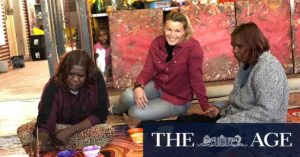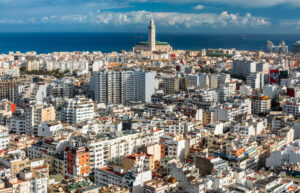
As Samoa approaches a pivotal national election on August 29, the island nation grapples with a series of challenges that have left many citizens, like taxi driver Muaautasi Kirifi Su’a, struggling to make ends meet. With six children and ten grandchildren to support, Muaautasi highlights the pressing issue on voters’ minds: the escalating cost of living.
In just five years, the price of a box of chicken has surged from 35 tala ($20) to over 85 tala, a stark indicator of the financial strain faced by many Samoan families. “I believe this is the experience of families all across the country,” Muaautasi shares. “If they can’t afford weekly expenses, especially not being able to afford the right food, their children will get sick and some people won’t live long.”
Political Turmoil and Economic Pressures
The upcoming election follows a period of significant political instability. Caretaker Prime Minister Fiame Naomi Mata’afa, often referred to as the “Iron Lady of the Pacific,” has faced two no-confidence votes this year. Her leadership has been tested by internal divisions within her ruling FAST party and gendered attacks in parliament.
Compounding the political drama, Samoa has endured severe power blackouts in 2025, which have disrupted businesses and livelihoods. Music producer Tuala Uili Lafaele reports losing nearly $3,000 in income during the outages. “Some of my friends who own businesses shared similar experiences,” he notes, as the government attributes the crisis to aging energy infrastructure.
Election Rivals and Campaign Promises
The political landscape is further complicated by the emergence of two main contenders challenging Fiame’s leadership. The first is Tuila’epa Sa’ilele Malielegaoi, the 81-year-old leader of the Human Rights Protection Party (HRPP), who served as Samoa’s prime minister for 22 years. Tuila’epa has proposed populist measures, such as annual 500 tala payments for every Samoan and the ambitious construction of a bridge between Samoa’s two main islands.
Meanwhile, La’aulialemalietoa Leuatea Polataivao Schmidt, Fiame’s former agriculture minister, is also vying for leadership. Despite his involvement in recent political infighting, La’aulialemalietoa remains a charismatic figure with a strong online presence. His campaign promises include free hospital services and financial support for low-income families, though questions about funding these initiatives remain unanswered.
Fiame’s Strategy and the Role of Misinformation
Fiame Naomi Mata’afa seeks re-election by emphasizing a “responsible” government approach. Her platform includes free education and healthcare, pension increases, and removing tariffs on basic food items to alleviate the cost of living. Despite criticism over her handling of the power crisis, Fiame argues that her government’s actions are measured compared to her rivals’ extravagant promises.
Misinformation has emerged as a significant issue in Samoa’s political discourse. Tuala Saui’a Louise Mataia-Milo, a senior academic, warns of the growing influence of digital misinformation, which often bypasses traditional community filters. “Eighty-one percent of Samoans have high trust in traditional institutions,” she explains, emphasizing the need for vigilance against sensational claims.
Gender Equality and Youth Engagement
Samoa stands out in the Pacific for its parliamentary gender quota and having a female leader. However, the gendered attacks on Fiame this year have sparked debates about the progress of gender equality in the country. Art teacher Moeloto Iliganoa finds inspiration in Fiame’s leadership but calls for greater youth representation in politics. “It’s time for young people to step up,” she asserts, highlighting the generational gap in the current political landscape.
As the election day approaches, Samoans like Ms. Iliganoa hope for change and a return to stability. “If there is no stable foundation, there is no stable house,” she concludes, reflecting the broader desire for a more secure and prosperous future for Samoa.







